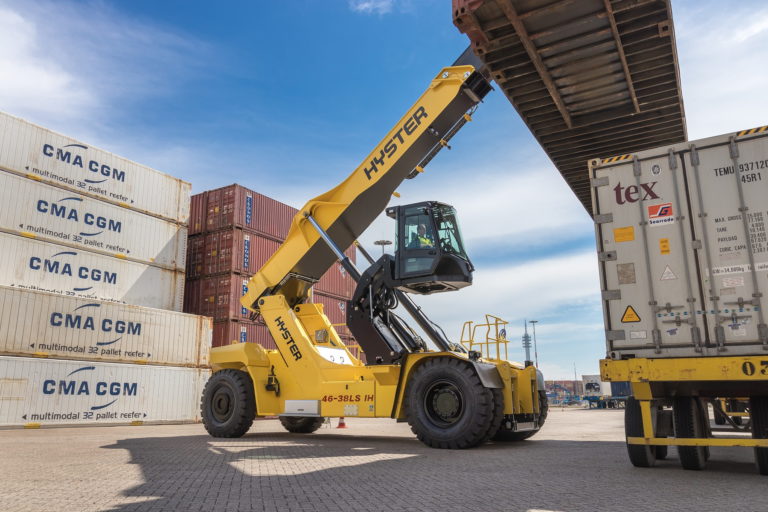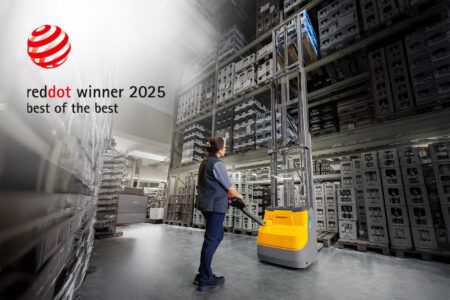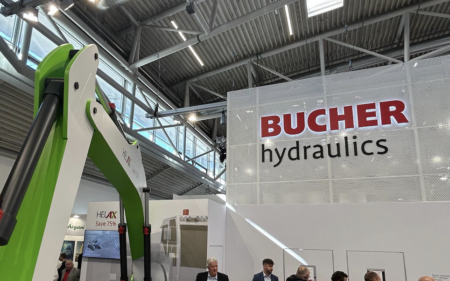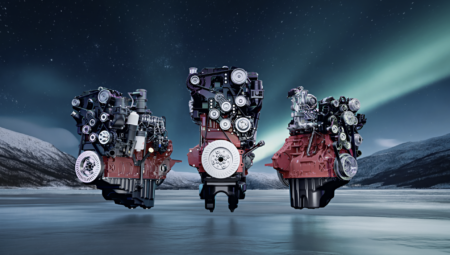Hyster Europe has developed a ReachStacker for use at terminals to handle containers on railroad cars in the second rail position.
“Terminal operators want to reduce damage and improve efficiency when handling containers on the second rail,” said Mark Nailer, Industry Manager for Hyster Europe. “In close co-operation with terminal customers we have developed a ReachStacker with a raised cab and remote control for pedestrian operation of the boom and spreader.”
The Hyster RS46 ReachStacker includes a hinged elevating operator cabin option on which gives operators direct visibility of the top corner pockets on the second rail containers even when there is a high cube container on a railcar in the first rail position.
Cameras and staff, known as spotters, to direct the operator had their limitations, putting extra time on the operation and increasing the cost per container moved. These are no longer necessary.
“The cab is raised and lowered smoothly on a hinged arm making it easy for the operator to see over a container, which improves productivity straight away,” said Nailer. “Both doors must be locked, and it can be raised while driving, although the speed is automatically reduced to 10Km/h.”
A stabiliser can be deployed at the front of the ReachStacker to handle a heavy load at extended load centre. There is also an optional tilt of up to 10 degrees on the cab, which helps provide improved visibility when handling high stacks and improving operator comfort.
“The overall height of the ReachStacker when the cab is lowered is the same as the standard model, unlike competitor models that use a mast,” he said. “This helps prevent the rearwards view from being affected. Plus, it makes road transport easier and speeds up the commissioning of the truck.”
In the event of truck breakdown or the drive falling ill, there are levers to manually lower the cabin both on the truck and in the cab itself. Maintenance costs are also kept low with features such as a single greasing point.
“We have developed a remote control for the boom and spreader enabling the driver to position the container whilst on foot.” said Nailer.
First, container is quickly placed in roughly the correct position over the railcar, then selecting the remote operation mode, which immobilises the vehicle, the driver leaves the ReachStacker.
“The driver gets into a safe position with good visibility of the railcar on the second rail and uses the remote control to move the boom and spreader,” he says. “All relevant operational data can be seen on the remote-control unit to position the container quickly and easily and means drivers can work independently without the need for a spotter.”





